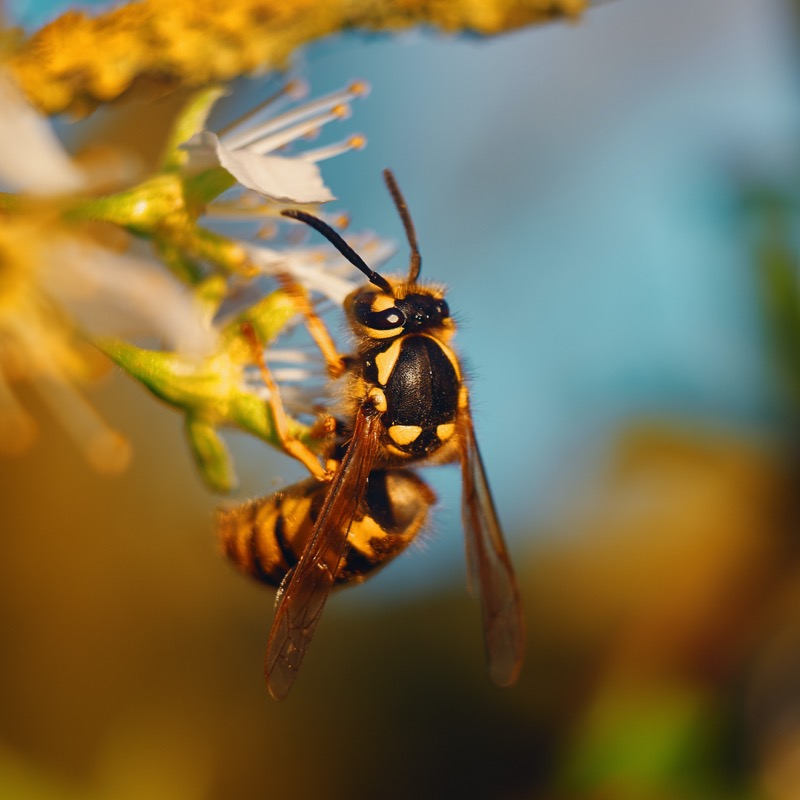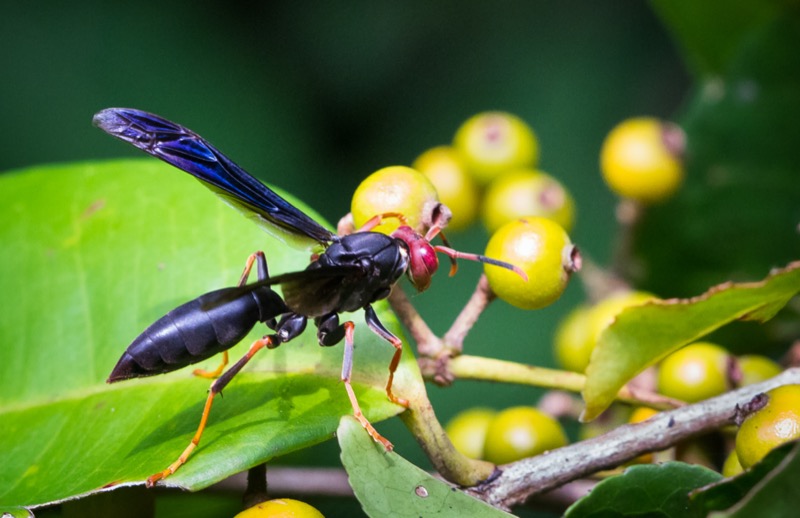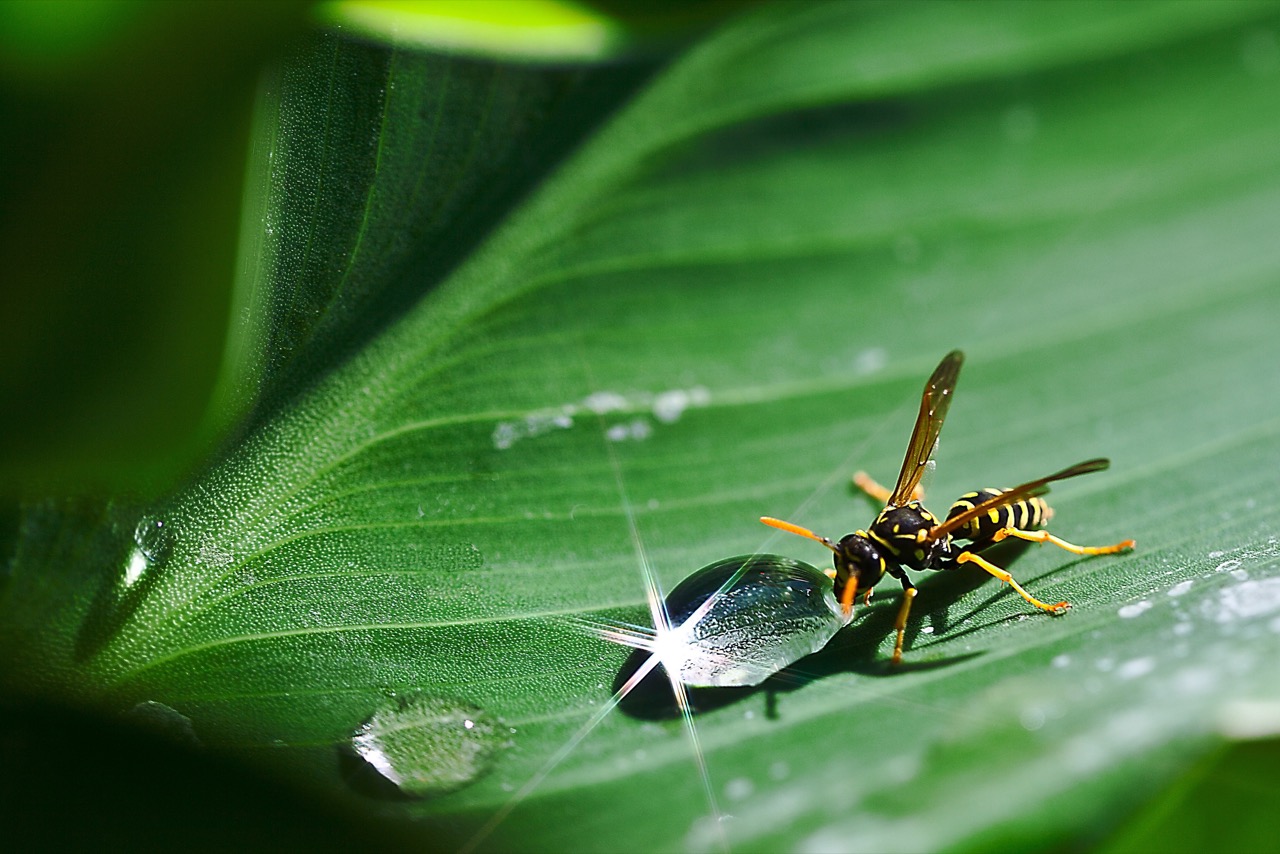What’s The Difference Between Yellow Jackets and wasps?
The yellow petals of a daisy flower gleam in the bright summer sun as a creature enveloped in a coat of black and yellow with 6 legs stand on top of it enjoying the sweet nectar. Adjacent to the Daisy, there is another winged creature with 6 legs and bright yellow and black coat hidden within a Tulip.
This hidden creature is smaller than the one on the Daisy and it sits attentively waiting for a meandering insect to become its prey. As an aloof Fly approaches, the creature reacts with thundering speed and snatches the Fly effectively killing it. This is the fierce minuscule Wasp of the Vespula and Dolichovespula genera which have been nicknamed Yellow Jacket in the US. The larger creature is a common wasp with the most common species being the European Paper Wasp. Many may think that Yellow Jackets are different from Wasps when in reality a Yellow Jacket is a type of Wasp. Nevertheless, Yellow Jackets differ greatly from other species of Wasp.

Although Yellow Jackets may be part of the Wasp species, they differ vastly in physical aspects. In addition to being smaller, Yellow Jackets have a thicker body that features two black antennae at the top while Wasps have skinnier bodies with orange-tipped antennae.
Furthermore, other species of Wasps, like the Red Paper Wasp, the blue-black Mud Dauber Wasp, and the red-winged Cicada Killers. It must also be noted that although Wasps are typically larger in size than their Yellow Jacket relatives, there are some species that can come to resemble Yellow Jackets in size. Most notably, the Potter Wasps ranges from ½ to ¾ of an inch similarly to how the Yellow Jacket’s typical size is ½ of an inch. In addition, the Mud Dauber Wasp also ranges from ½ to 1 ½ inch. As demonstrated, Yellow Jackets tend to be more limited in color and size while Wasps on the other hand have a much larger variety in these characteristics.

In conjunction with physical appearance, Wasps and Yellow Jackets have distinct behaviors in terms of aggression, feeding, and behavior with members of their colonies. One very apparent difference is that Yellow Jackets do not seek to pollinate at all, although they may do it unintentionally, and instead go for food such as pests (caterpillars, fly, etc.) and during the summer they are likely to eat food that we humans consume (soda, meats, sugar, etc.) due to the increase in population during that time of year. Wasps on the other hand pollinate somewhat, however, they are not very efficient because they do not possess hairs (setae) as Bees do.
Some Wasps will scavenge like Yellow Jackets, but other Wasps, referred to as Predatory Wasps, will hunt other creatures like the Cicada Killer, Bald-Faced Hornet, and the Ambush Wasp. In addition, Yellow Jackets exemplify social behavior meaning they engage in the societal structure that a colony or nest has with the Queen at the top. This also means that Yellow Jackets will become extremely aggressive if anything gets near their nest. Wasps are also social creatures and will defend their nest with great fury just like Yellow Jackets, however many Wasps species are solitary creatures. Cicada killer wasps, potter wasps, digger and sand wasps, and mud daubers are notable examples of Wasp species that are solitary. This means that a female Wasp of that species will give birth to and raise their young.
Finally, Yellow Jackets and Wasps contrast greatly in the way they build their nests. When building their nests, the Yellow Jacket Queen, who is the only one that survives the winter, chooses a site for the next nest either underground or in a covered structure (attics, porches, holes in walls, etc.). For starters, the Queen will build a small paper nest where she will lay the eggs that contain the next generation of Yellow Jacket workers. Once those eggs hatch, the workers will expand the nest by either gathering food, defending the nest, or providing the chewed up wood fibers that make up the nest’s spherical structure.
As previously seen, other Wasps species vary greatly in this aspect. The European Paper Wasps will make their nests on man-made structures and the nests will resemble an open honeycomb. The European Hornet will avoid making nests underground, but like the Yellow Jacket, it will make nests in wall and tree cavities. One species of Wasp, the Bald Faced Wasp, makes its Nests with a similar shape to that of Yellow Jackets except the nest will hang from a tree branch.
The mentioned types of Wasps are social; solitary Wasps will tend to make nests underground like Yellow Jackets (Digger and Sand Wasps), others will make clay nests above ground (Potter Wasp and Mud Dauber Wasp), and the last kind of solitary wasp nest is a common area where numerous Wasps make their individual nest in the same place to give the impression of a large colony. As shown, Yellow Jackets have a lot of differences and similarities with other Wasps species in terms of how they build their nests.
From their physical appearance to their striking behavior and to their specified nest building techniques, Yellow Jackets are a unique selection of the Wasp species. These small black and yellow chunky wasps are extremely important to the environment along with the many other species of Wasps. All Wasps are pivotal to the ecosystem because they control pests and even though they are not very effective at it, they contribute to pollination.
The characteristics that are unique between each kind of Wasp are special powers that they use to keep the environment in balance. Oftentimes Yellow Jackets and other Wasps are considered pests themselves because they do not pollinate as well as Bees and their stings are far more dangerous and painful than other flying insects. Despite this, it is in the best interest of humanity to conserve Yellow Jackets and other Wasp Species alike.
Author: Isaac Ponce-Alvarez
University of Arizona
Sources
- https://www.clemson.edu/extension/beekeepers/fact-sheets-publications/yellow-jackets.html
- https://extension.umd.edu/hgic/topics/predatory-wasps
- https://www.rescue.com/latest-buzz/outdoor-pests/how-to-tell-a-wasp-from-a-yellowjacket








